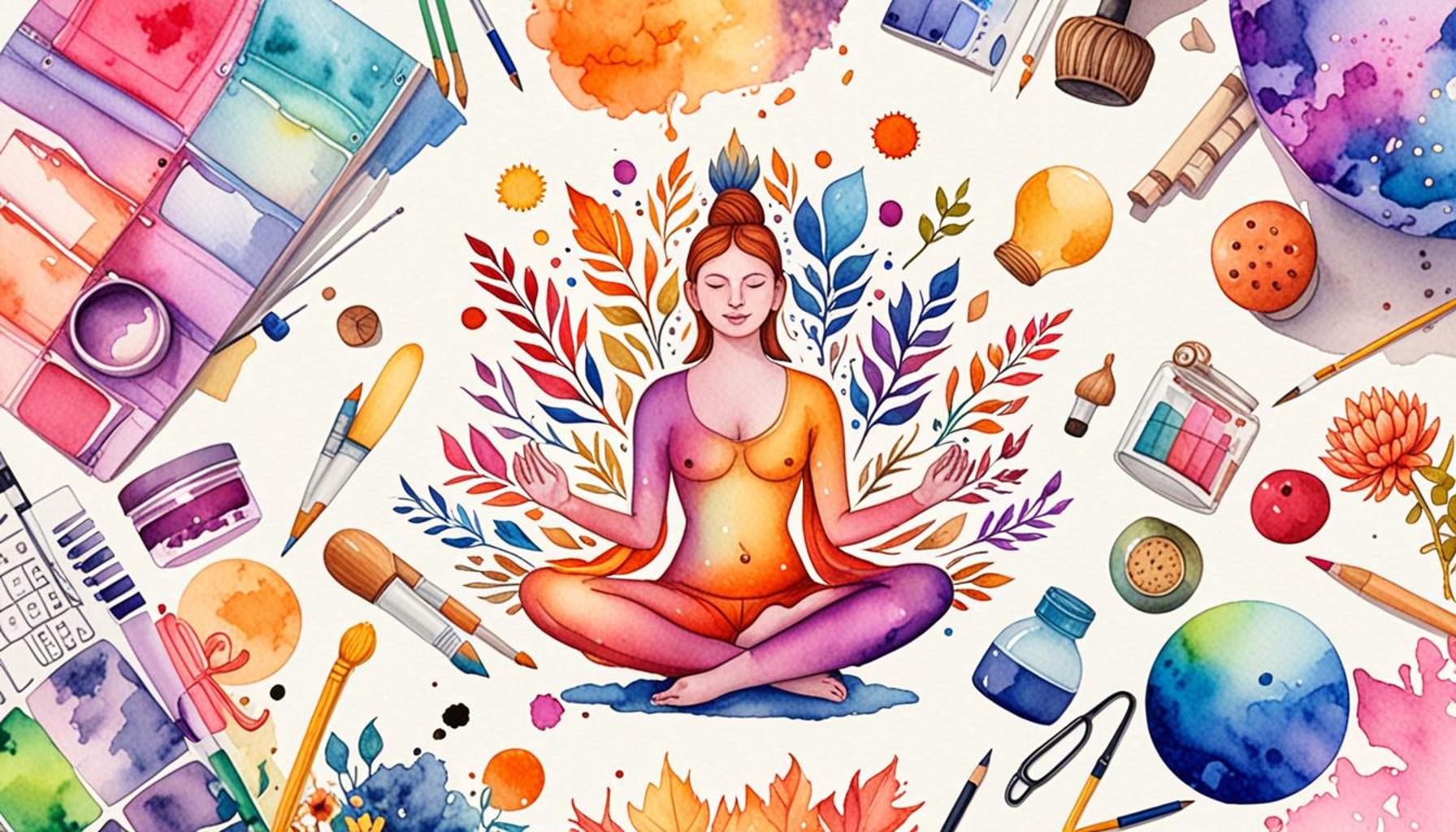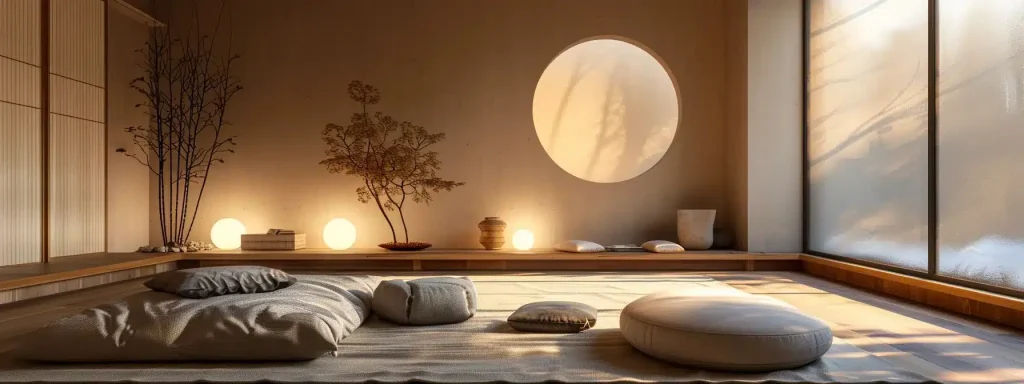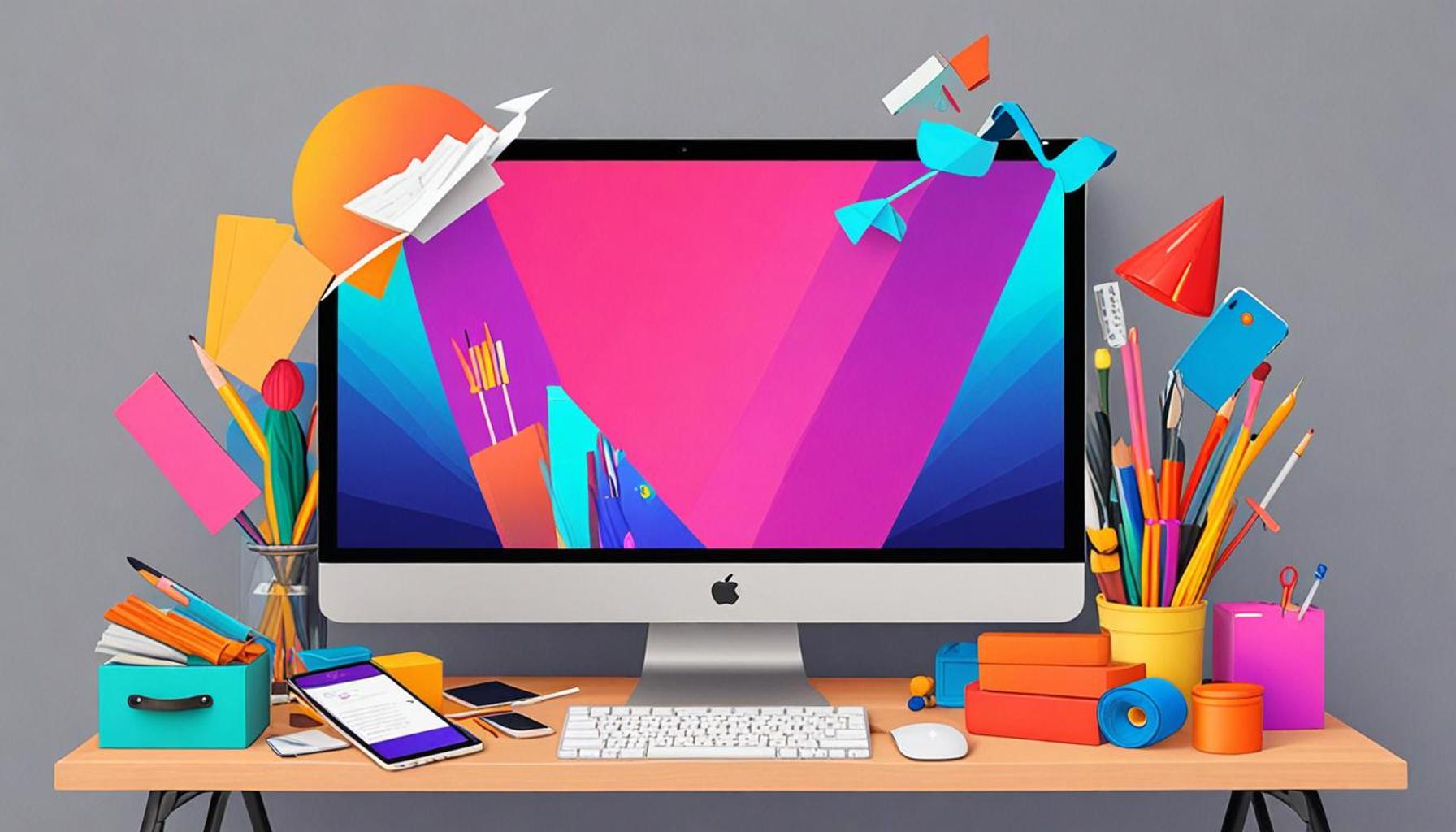Creating a Clutter-Free Mind: Meditation and Organization Techniques

Understanding the Connection Between Mindfulness and Organization
In our increasingly hectic lives, the struggle to maintain a clutter-free mind is a shared experience among many. As distractions abound—from the barrage of notifications on our smartphones to the demands of a busy schedule—strategizing for better mental clarity is vital. Utilizing both meditation and organization techniques can provide substantial support in reclaiming our mental space.
The Impact of Meditation on Mental Clarity
Meditation is not merely a relaxation tool; it is a practice deeply rooted in fostering mindfulness. This form of attentive awareness allows an individual to immerse themselves fully in the present moment, creating a buffer against the noise of constantly racing thoughts. Studies, such as those published in the Journal of Happiness Studies, have documented how regular meditation can significantly enhance cognitive functioning and emotional regulation.
By engaging in mindfulness meditation, for instance, practitioners have reported improvements in their focus and the ability to handle stress more effectively. A commonly practiced technique is mantra meditation, where one silently repeats a word or phrase, redirecting attention whenever thoughts begin to wander. This practice trains the mind to become more resilient against distractions, which is essential in our modern world.
Organizational Techniques to Declutter Physical Space
While meditation works wonders for our internal landscape, organization techniques can assist in physically decluttering our environments. A tidy space is crucial for mental well-being, as a clean organization can improve productivity and reduce feelings of anxiety. Techniques such as the KonMari Method, created by Marie Kondo, encourage individuals to assess their belongings based on whether they “spark joy.” This process leads to significant reductions in clutter, creating not just a clean home but also a mind more receptive to creativity and focus.
Additionally, implementing systems such as the “one in, one out” rule, where for every new item brought into a space, an older one is removed, aids in maintaining order. This consistency cultivates a lifestyle that supports mental clarity and peace.

Uniting Both Practices for Holistic Benefits
The fusion of meditation with organizational practices forms a comprehensive approach toward achieving a clutter-free mind. For example, setting aside time each week to meditate before engaging in organizational tasks can enhance clarity and focus, making it easier to confront the clutter both physically and mentally. Research further supports this synergy: a study by neuroscientists concluded that those who engage in mindfulness meditation displayed enhanced executive functioning skills, which are crucial for effective organization.
Whether you are a busy professional inundated with deadlines or a student balancing various responsibilities, exploring these combined methodologies can profoundly transform your daily life. Embracing a practice of meditation alongside intentional organization encourages not only a clearer environment but also a renewed sense of peace and purpose. By diving deeper into these interconnected practices, individuals can pave their way toward a more harmonious and productive existence.
DISCOVER MORE: Click here to streamline your digital life
Ways to Integrate Mindfulness and Organizational Skills
Creating a clutter-free mind goes beyond simple practices; it requires a dedicated approach that combines the mental insights gained from meditation with the structured discipline of organization techniques. To effectively integrate these two methodologies into daily routines, consider the following strategies:
Daily Mindfulness Practices
Establishing a consistent mindfulness routine can significantly influence your capacity to declutter the mind. Here are some practical approaches:
- Morning Meditation: Begin each day with a short meditation session. Even as little as 10 minutes can help center your thoughts and create a positive outlook for the day ahead.
- Mindful Breaks: Schedule brief, five-minute mindfulness breaks throughout your day. Utilizing these pauses can combat mental fatigue and increase your overall concentration.
- Breath Awareness: Focus on your breathing when faced with overwhelming tasks. This simple technique helps anchor your thoughts and alleviates feelings of anxiety.
By practicing these daily mindfulness techniques, you will notice a gradual reduction in mental chatter, facilitating clearer thought processes and improved decision-making abilities.
Layering Organization Techniques
To complement the mental clarity achieved through meditation, implementing practical organizational strategies is essential. Here are several effective organizational techniques that can lead to a simplified lifestyle:
- Prioritization: Start each day by listing out your top three tasks. This focused approach reduces overwhelm and ensures that you address what truly matters.
- Declutter Regularly: Dedicate at least one day a month for a thorough decluttering session. This practice not only keeps your environment tidy but also reinforces the habit of letting go of unnecessary items.
- Digital Organization: Tackle digital clutter alongside physical clutter. Organizing files and emails into folders can enhance productivity and reduce stress associated with digital overload.
As you implement these organizational techniques, you will discover that a structured approach can amplify the benefits of your meditation practice. The physical space you create can serve as a reflection of the clarity you cultivate in your mind. The synergy between a clearer environment and a more focused mental state can set the stage for creativity and improved efficiency in your daily activities.
Combining Both Practices in Everyday Life
To maximize the benefits of both meditation and organization, consider designating specific times during your day that blend these practices. For instance, taking a moment to meditate on your goals after a decluttering session can solidify the sense of achievement you’ve just created. Reflecting on what you’ve accomplished can reinforce the positive impact of both a tidier space and a focused mind. Embracing this holistic approach is vital in your journey toward a clutter-free mind and an enhanced lifestyle.
Creating a Clutter-Free Mind: Meditation and Organization Techniques
In our fast-paced world, clutter – both physical and mental – can overwhelm us, leading to stress and anxiety. Implementing both meditation and organizational techniques can significantly enhance our focus and well-being. Below, we explore some effective strategies to create a clutter-free mind.
| Meditation Techniques | Organizational Strategies |
|---|---|
| Mindfulness Meditation | Decluttering Spaces |
| Guided Imagery | Utilizing Storage Solutions |
| Deep Breathing Exercises | Setting Up Routines |
Mindfulness meditation encourages individuals to focus on the present moment, helping to clear the mind of unnecessary distractions. Techniques like guided imagery transport you to serene environments, promoting relaxation. Combining these methods with effective organizational strategies like decluttering your physical space allows for greater mental clarity. Engaging in deep breathing exercises can ground you, while well-defined routines provide structure and reduce chaos, leading to a more peaceful and focused mind. Exploring these practices can lead to profound improvement in your mental landscape, fostering tranquility in an otherwise chaotic world.
DISCOVER MORE: Click here to learn about digital decluttering strategies</a
Enhancing Mental Clarity through Environmental Influence
Understanding the relationship between the external environment and internal thoughts is crucial when pursuing a clutter-free mind. The spaces we inhabit greatly influence our emotional well-being and cognitive function. By strategically organizing your physical surroundings and nurturing a serene mental atmosphere, you can further sharpen your focus, creativity, and productivity.
The Impact of Environmental Design
One powerful aspect of creating a clutter-free mind involves considering how your environment can either support or detract from mental clarity. Here are a few principles to keep in mind:
- Natural Light: Harness sunlight whenever possible. Studies have shown that exposure to natural light can enhance mood and cognitive performance. Position your workspace near a window or use light therapy lamps during the darker months to brighten both your environment and your mood.
- Color Psychology: The colors within your space can impact your mental state. For instance, blues and greens have a calming effect, whereas yellows and oranges can stimulate creativity. Choose colors that resonate with your desired emotional state to create an environment that fosters productivity.
- Ergonomic Comfort: Physical discomfort can divert your attention and contribute to mental clutter. Invest in ergonomic furniture and accessories that promote good posture and comfort during your meditation or organizational tasks, enhancing your overall experience.
Taking the time to consider the design and functionality of your spaces results in a more cohesive relationship between your physical environment and mental well-being, creating a backdrop for clarity and organization.
Mindfulness in Routine Activities
Incorporating mindfulness into daily tasks beyond formal meditation can also contribute to a clutter-free mind. Engaging fully in routine activities allows for a deeper awareness of your surroundings and tasks, fostering clearer thoughts. Here are some activities where mindfulness can play a vital role:
- Mindful Cleaning: Transform mundane cleaning sessions into moments of meditation. Focus on the sensations of the tasks, the movements of your body, and the satisfaction of watching your space become more organized. This shift in perspective turns cleaning from a chore into a mindful practice.
- Walking Meditation: Instead of rushing from one place to another, practice walking meditation. Pay attention to each step, the rhythm of your breath, and the textures under your feet. This practice grounds your thoughts and helps you appreciate your environment, achieving clarity in the process.
- Mindful Eating: Approach meals as an opportunity for mindfulness. Savor each bite, reflect on the flavors and textures, and take the time to disconnect from distractions. A mindful meal encourages presence, providing a break for the mind and fostering a state of relaxation.
By integrating mindfulness into routine actions, you not only elevate these activities but also create moments of peace that enrich your day, ultimately contributing to the development of a clutter-free mind.
Utilizing Technology Thoughtfully
In a world increasingly reliant on technology, utilizing digital tools thoughtfully can support both mental organization and mindfulness. For example, consider using apps that encourage meditation and organization, such as:
- Habit-Tracking Apps: Using apps to track your meditation or decluttering habits can motivate you to remain consistent. Setting reminders for mindfulness breaks or scheduled decluttering sessions encourages a structured approach to decreasing mental and physical clutter.
- Virtual Organization Tools: Digital platforms like Trello or Notion can offer innovative solutions for managing tasks. By categorizing tasks visually, you can reduce feelings of overwhelm while maximizing productivity.
- Soundscapes and Music: Leverage apps with soundscapes or ambient music tailored for concentration. Listening to calming sounds while you meditate or organize fosters an environment conducive to focus and relaxation.
Through thoughtful engagement with technology, you can enhance both your meditation practices and organizational strategies, ultimately cultivating an environment that supports a clear mind and daily productivity.
DISCOVER MORE: Click here to enhance your daily routine
Conclusion: The Path to a Clutter-Free Mind
In a fast-paced world overflowing with distractions and responsibilities, striving for a clutter-free mind is not just a luxury but a necessity for maintaining overall well-being. By integrating meditation techniques and thoughtful organization strategies, you can cultivate a mental state that promotes clarity, focus, and creativity. This journey begins with understanding the profound impact of your environment, where elements such as light, color, and ergonomics can significantly influence your emotional and cognitive states.
The practice of mindfulness in daily activities elevates even the simplest tasks, transforming them into opportunities for mental clarity and reflection. Whether it’s through mindful cleaning, walking meditation, or savoring meals, these practices foster a deeper connection with the present moment, allowing for a more organized and peaceful mind.
As technology continues to weave itself into the fabric of our lives, using digital tools thoughtfully can enhance your organizational efforts and meditation practices. Innovative apps and platforms can serve as allies in your quest for a less cluttered life, helping you track habits, manage tasks, and create calming atmospheres.
Ultimately, creating a clutter-free mind is an ongoing journey that requires commitment and self-awareness. It’s about making conscious choices that align your external environment with your internal peace. By embracing these techniques and principles, you pave the way for a life enriched with clarity, focus, and mindful presence. Discovering and nurturing your unique approach to meditation and organization will not only transform your mental landscape but will also enhance your daily experiences, leading to a more fulfilling and harmonious existence.


